Objection handling like an expert
Introduction
One of the best things you can do to improve your sales successes is work on your ability to handle objections. Overcoming your prospects’ barriers to purchase or buy and change their mindset takes a great deal of insight, perspective and a true belief in the solution you are providing.
In our sales training workshops, we cover objection handling in three parts, which we have outlined below.
Part 1: Planning
Planning is both the first step and perhaps the most important step of the objection handling process. It is vital to always have an idea of the types of objections you may face before going into a meeting or phone call. This will eliminate the element of surprise. Objections evolve all the time so don’t expect them to stay the same every month. Know your audience. Go in prepared.
Part 2: Is it a reason or excuse?
After listening to your prospects objection, you need to think about the motives behind their responses. Identifying whether their objection is just an excuse because they’re not interested – or a real reason like a problem with the solution – can help direct the way in which you manage the situation.
” Excuses: It is common for prospects to think of automatic deflective objections, simply because they are not interested. Whether it may be because they have never dwelled on the problem before or they are in the middle of something, they won’t give you the time of day if you don’t resonate with them and spark curiosity. Your pitch needs to illustrate the problem and the solution to them in an intriguing and inspiring way. It can take a while to work out what makes this person tick, their frame of mind and what angle you should take, however it’s vital if you want to break through the excuses.
” Reason: Real reasons should be dealt with a bit more logically. If your prospect believes that the solution you are offering won’t actually solve their problem, you won’t be able to get past the objection. Therefore getting them to believe often requires a true belief in the solution yourself.
Part 3: Using Neuro-Selling techniques® to elicit emotions and actions
In both instances – whether your prospect is objecting with excuses or reasons, the key to closing the sale is creating excitement that their particular problem will be solved. At Dynamo Selling, we teach Neuro-Selling Techniques ® which is a concept developed by our Director Raimond Volpe. It stems from a combination of two different concepts, the three brains of humans and the eight emotions of humans.
By understanding our three brains (the reptilian brain, the limbic brain and the neo-cortex) and how each of the brains interact with each other, we can leverage this knowledge to create visualisations. The reptilian brain is largely unconscious and often unable to distinguish what’s real and what’s imagined. By using visualisation techniques, we can elicit desired results from the reptilian brain. While this strategy is quite complex, the core concept behind it is that by influencing our thoughts first, we can generate a desired emotion and then a behavior. This is explained in more depth in this blog post.
We have seen huge improvements in our sales training clients when they implement each of these three steps in order. It takes a significant amount of effort to not only learn how to implement these practices, but how to use them on the fly and use them well. This is one of the primary reasons we introduced monthly coaching sessions into our packages – because just like any good skill, without constant practice, the art can be forgotten.
If you’re interested in finding out more about our sales training packages, please get in touch here.

